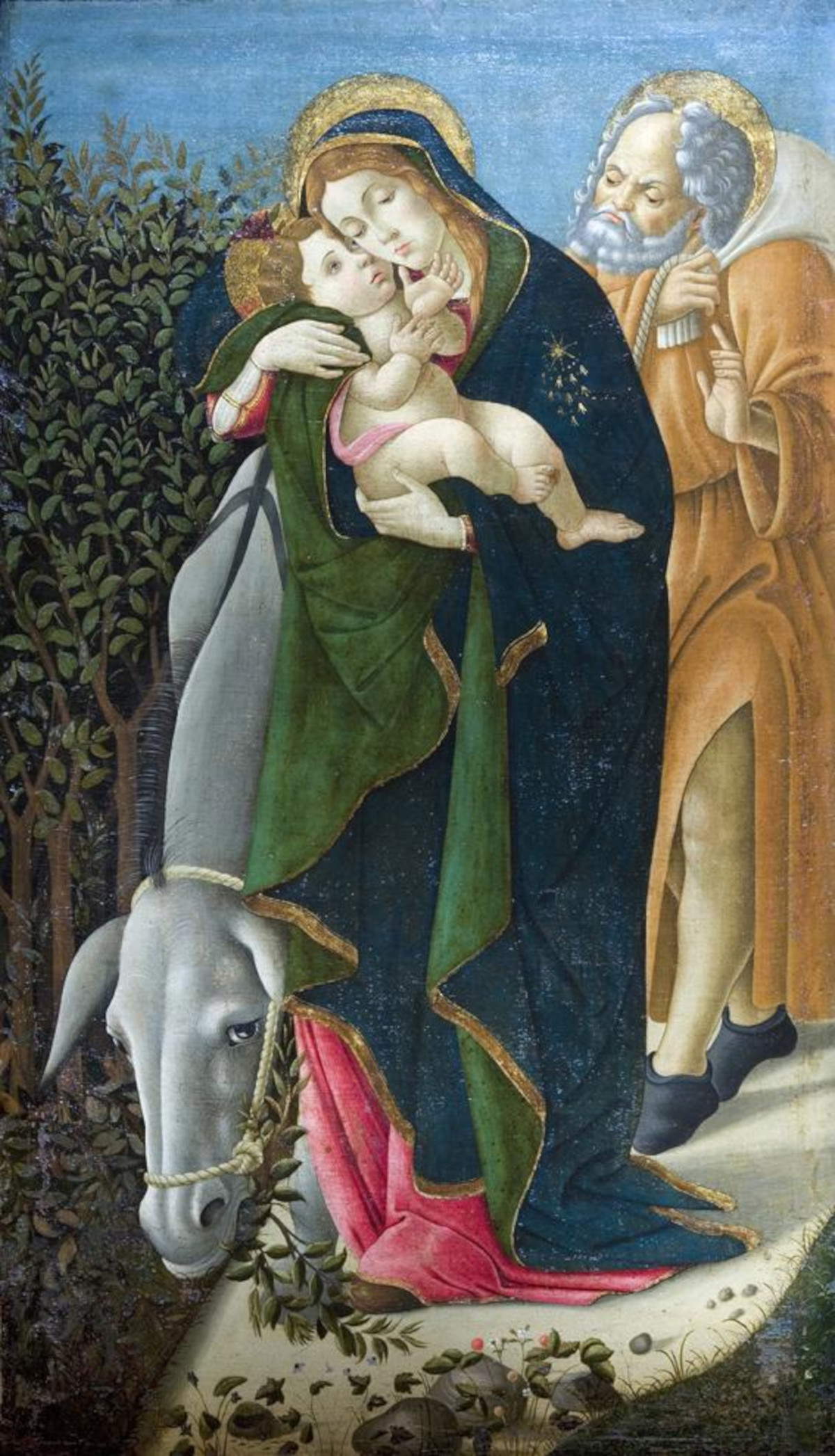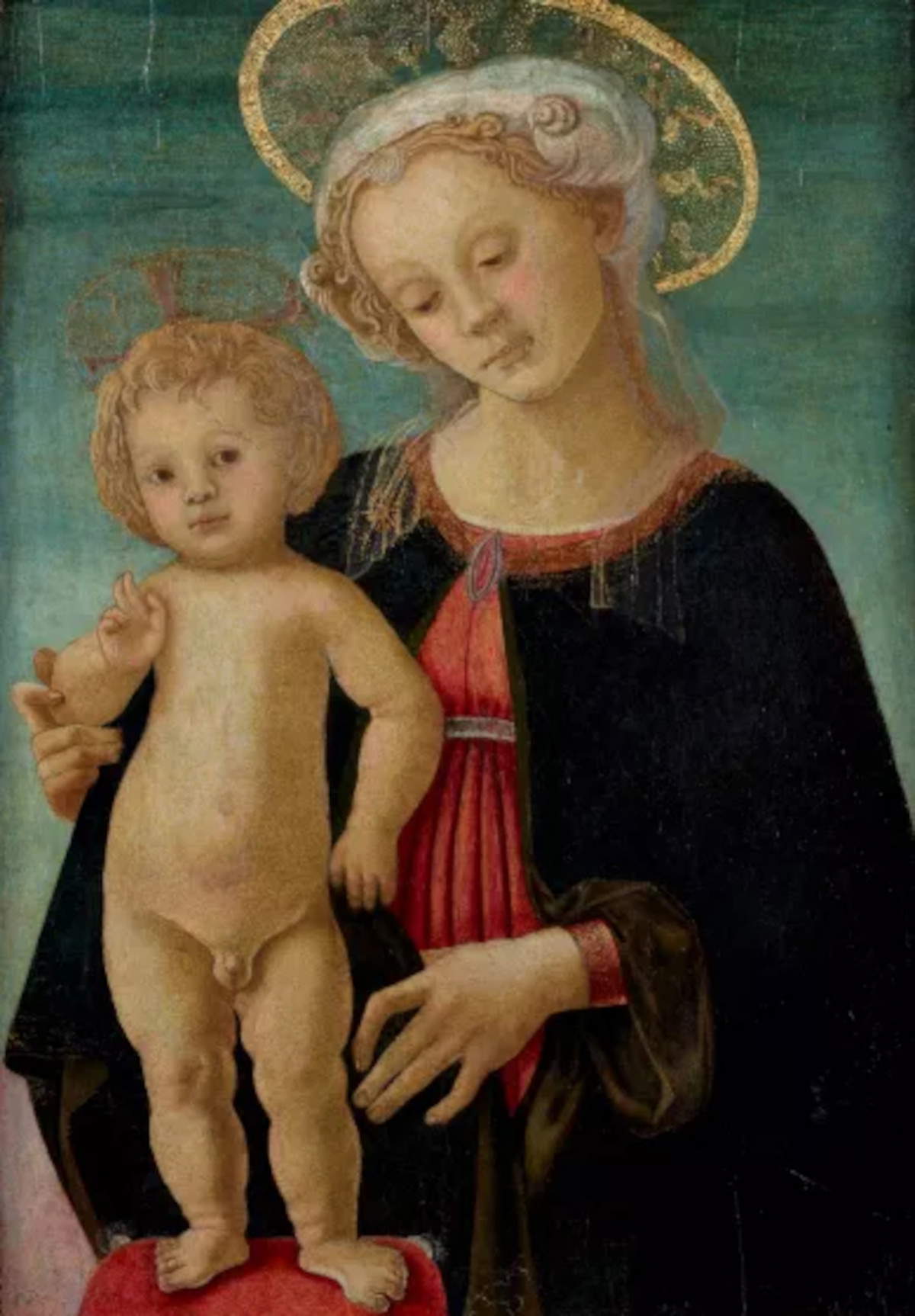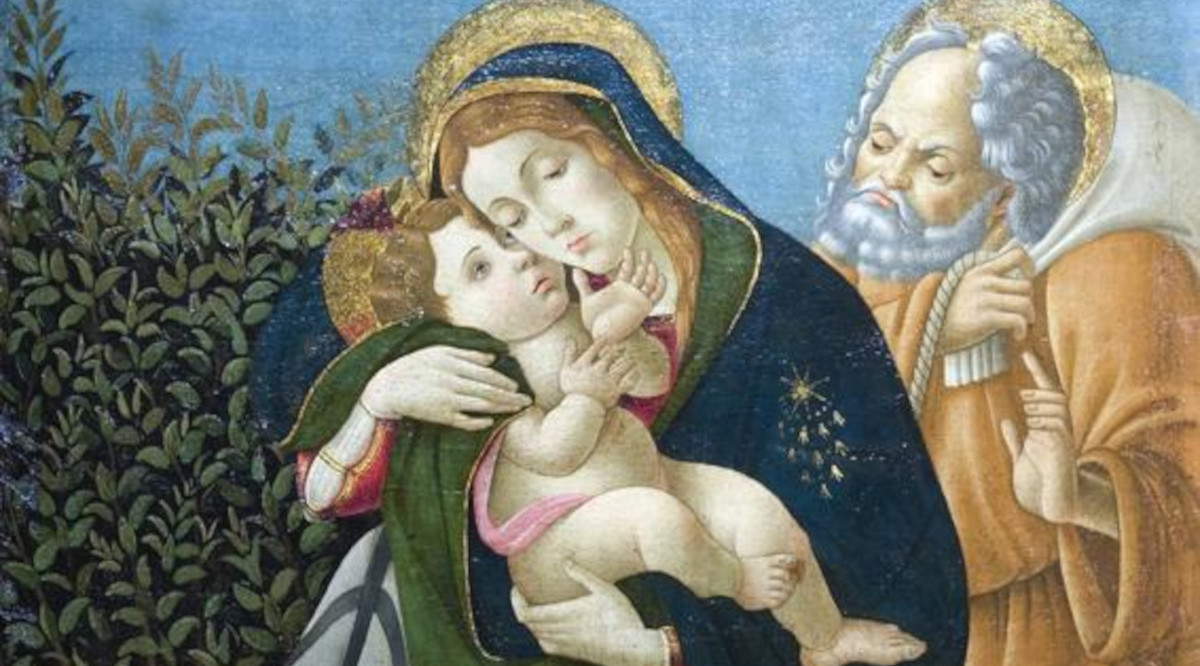From Nov. 22, 2025, to Feb. 15, 2026, Palazzo Blu in Pisa will host two works by Sandro Botticelli (Florence, 1445 - 1510) from the Jacquemart-André Museum in Paris, which will temporarily join the permanent collection. The paintings on display, Madonna and Child (c. 1470) and Flight into Egypt (c. 1495-1500), were both purchased in Florence in the late 19th century by local antiquarians and are now the focus of an exchange with the Parisian institution. In the past few months, in fact, the Jacquemart-André presented two works from the Palazzo Blu collection, namely Simon Vouet’s Portrait of Artemisia Gentileschi and Clio, Muse of History by Artemisia Gentileschi, as part of an exhibition dedicated to the seventeenth-century painter; now it is the French institution that is reciprocating by sending two important paintings from its collection to Pisa, which will remain on public display for three months.
The exhibition, realized with the collaboration of Gigetta Dalli Regoli and Stefano Renzoni and organized by Palazzo Blu with the support of the Pisa Foundation, also offers an opportunity to explore a little-known chapter: the presence of Botticelli in Pisa at the end of the 15th century, when the artist was commissioned to prepare a sketch for the Chapel of the Incoronata in the Cathedral, a project of which no trace remains. In the second half of the 15th century, the Opera della Primaziale of Pisa commissioned Sandro Botticelli to complete the decoration of the Chapel of the Incoronata in the Cathedral. In 1474, Botticelli stayed in Pisa, where he made a sketch dedicated to the Virgin, but the work was not completed and traces of the work were lost with the chapel’s subsequent transformations. However, his passage and attention to ancient sculptures and Giovanni Pisano’s Pulpit influenced the female figures in his works.


The two paintings coming to Palazzo Blu represent significant moments in Florentine production in the late 15th century: the Madonna and Child, linked to the model of the Madonna of the windowsill devised by Andrea del Verrocchio and popular among young artists such as Perugino and Ghirlandaio in response to the growing demand for devotional images; and the Flight into Egypt, characterized by the unusual choice of depicting the Virgin as she walks beside the donkey, carrying the Child in her arms and followed by St. Joseph behind her. This interpretation, particularly innovative in the foreshortened view, may refer not to the departure to Egypt but to the return from exile, a rare episode but attested in Byzantine models.
Both works were acquired in Florence by collector Nélie Jacquemart: the Escape to Egypt in 1887 from antiquarian Stefano Bardini and the Madonna and Child the following year from antiquarian Pallotti.
“The exhibition is an opportunity to enhance a happy collaboration with the Jacquemart - André Museum in Paris, with whom in recent months we have had the opportunity to promote an exchange of works from the museum’s permanent collection,” stresses Cosimo Bracci Torsi, president of Palazzo Blu. “The collaboration is a source of pride and projects Palazzo Blu in an international scenario. At the same time it makes it possible to bring two works by Botticelli to Pisa. An unexpected ideal return of the Florentine artist to the city, after the works that saw him involved in the Pisa Cathedral.”
 |
| Two Botticelli masterpieces from the Jacquemart-André in Paris on display at Palazzo Blu in Pisa |
Warning: the translation into English of the original Italian article was created using automatic tools. We undertake to review all articles, but we do not guarantee the total absence of inaccuracies in the translation due to the program. You can find the original by clicking on the ITA button. If you find any mistake,please contact us.